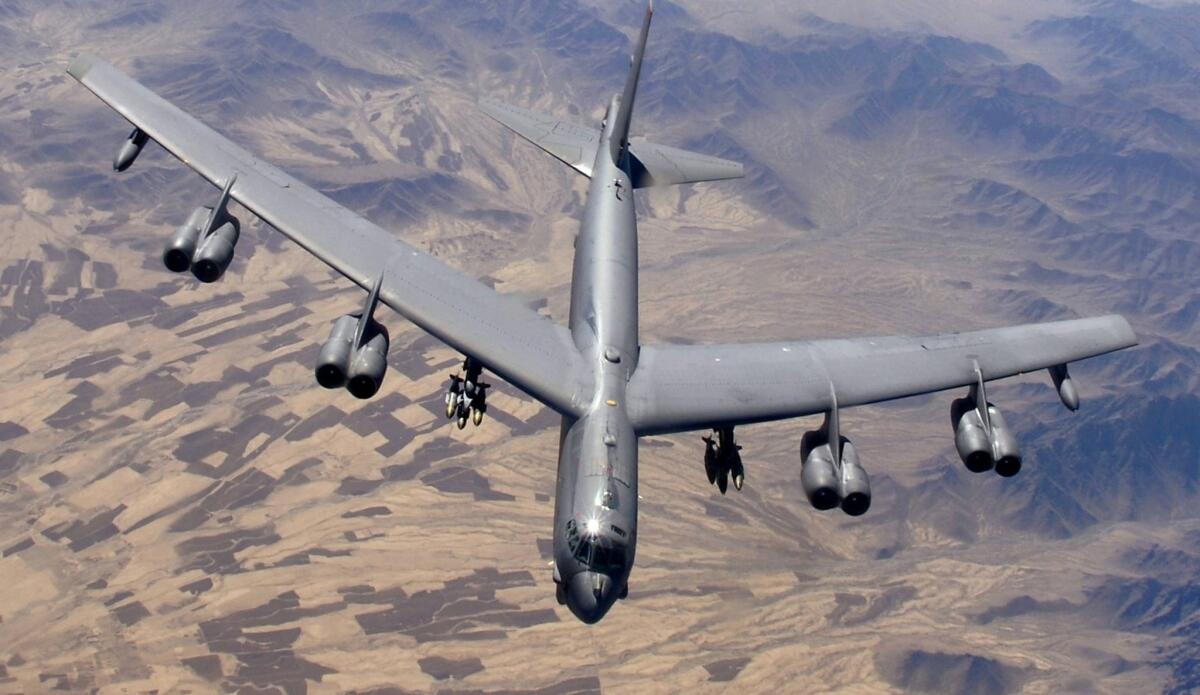Forest Service fights fires with aging tankers from another era
Many of the tankers are retired military aircraft that are costly to maintain and dangerous to fly. Wings break off, engines catch fire and parts must be scrounged.
- Share via
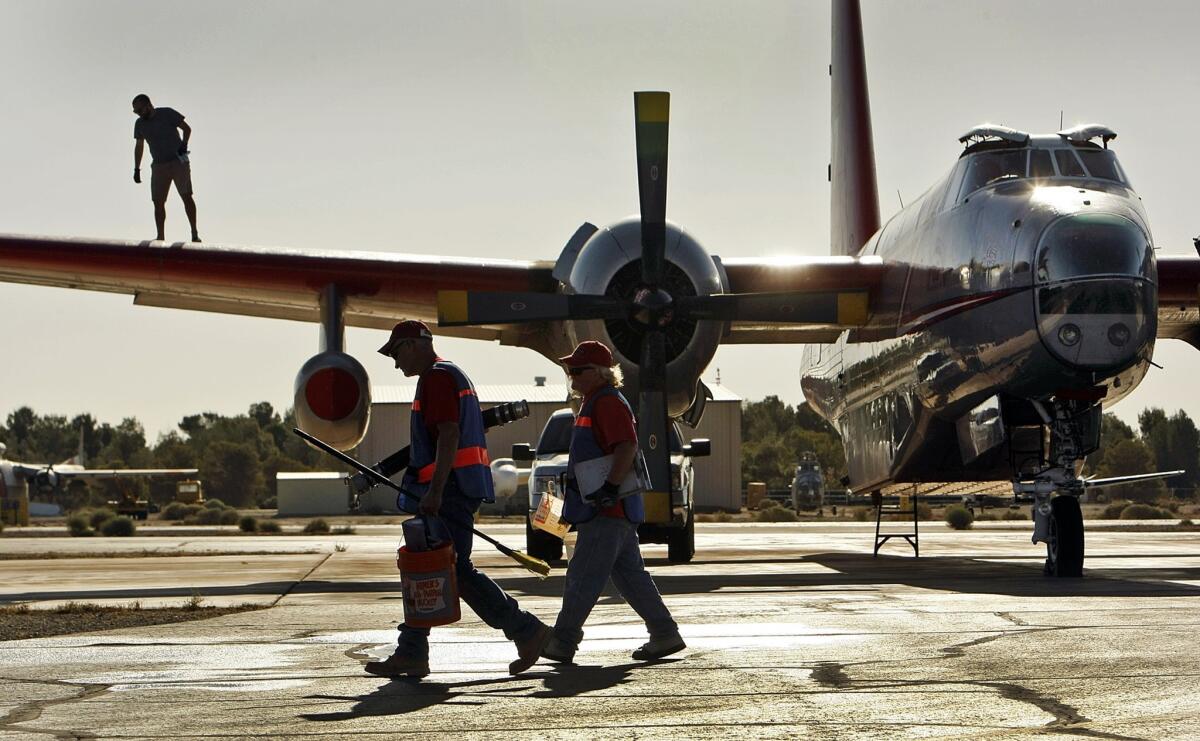
T
he blaze near Yosemite National Park had incinerated scores of acres and was spreading fast. It was time, federal officials decided, to attack it from the air with all the resources at their command.
As the nation's armada of air tankers began landing at a staging area near here, it was clear that this was a fleet from another era.
The planes showed their age. Propellers coughed to a stop and smoke spewed from their piston engines. Many of these restored tankers were built during the Eisenhower administration.
The Forest Service fleet, which drops retardant to give firefighters on the ground crucial time to put out raging wildfires, is too old, industry and government officials say. Because there are so few planes, critics contend, the fleet is no longer capable of doing all it should to contain fires. Over the last decade, the service reduced its fleet from 47 to just 12, all operated by businesses under federal contract.
Critics also say the planes are dangerous. Since 2001, tanker crashes have killed 22 aviators. Six died last year.
"It's pathetic," said Tony Kern, former Forest Service chief of aviation. "We have brave aviators using ancient technologies and as a result they're losing their lives. It's a horrifying fact that won't change unless government action is taken."
Demands that the Forest Service replace these planes have come from former pilots, government officials, firefighter advocacy groups and the California Department of Forestry and Fire Protection.
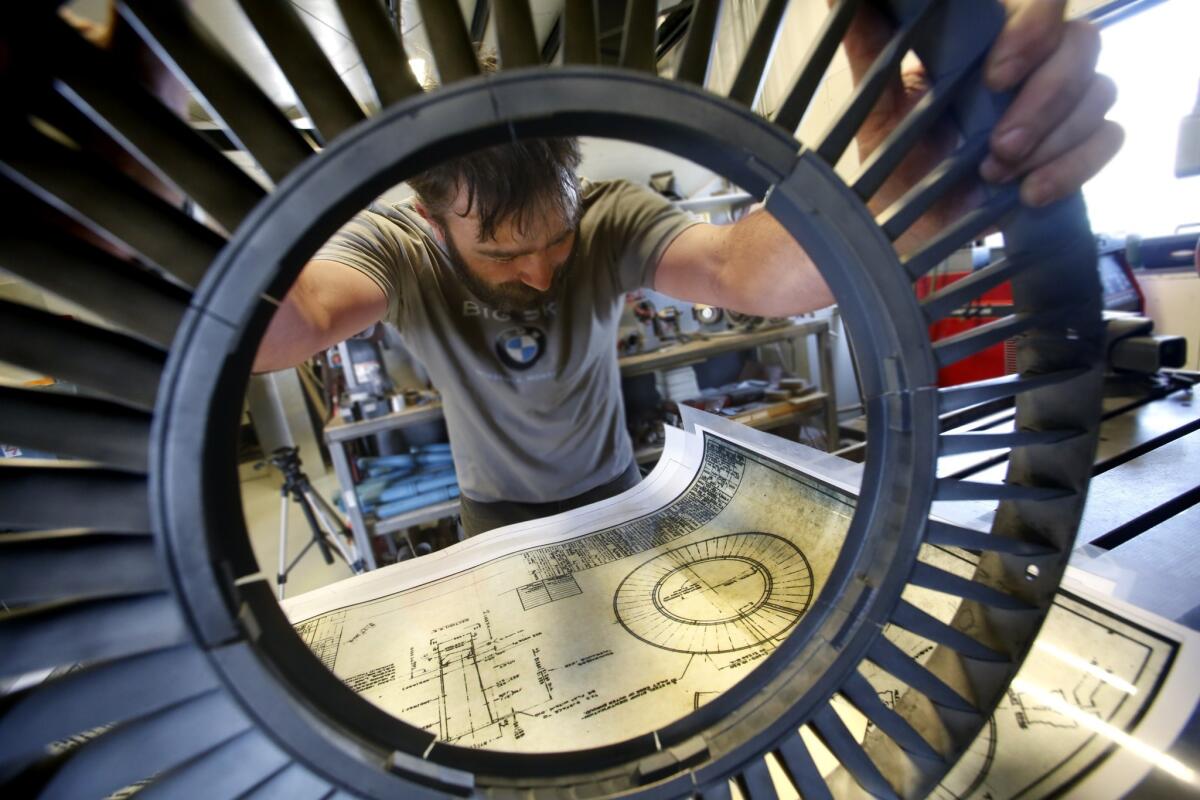
Aircraft mechanic Eric Stavish reads an original Lockheed P-2V airplane blueprint at Neptune Aviation Services Inc. When spare parts for the nearly 60-year-old firefighting planes can't be found, the company makes them from scratch. (Don Bartletti / Los Angeles Times) More photos
Half-century-old aircraft are difficult to keep flight-ready, and these tankers take an extra beating from the turbulence, updrafts and hot ash they encounter on firefighting missions.
Wings break off. Engines catch fire. And, in those conditions, stressed pilots make mistakes.
A few of the tankers started out as airliners. Nearly all the rest are retired military aircraft that were refurbished after being culled from the Pentagon's boneyard of discarded planes in Arizona.
Maintenance is a challenge. Engine parts are scrounged from warehouses. In one instance, a propeller was pulled from storage at a museum. If parts can't be found, technicians machine their own from blueprints drawn up around 1950.
At the air attack base near Yosemite in August, the challenges the Forest Service faces were apparent. After one of the tankers rumbled in for a landing, mechanics scurried to replace a blown engine.
It happens so often that the crew hauls a trailer full of spare parts from fire to fire.

Nothing can match the speed and power of a large tanker, the Forest Service says.
An all-out air attack to slow a fire includes helicopters and smaller single-engine tankers. But their capacity to carry retardant is much less than the Forest Service's larger tankers, which can drop 2,000 to 10,000 gallons ahead of the fire.
"That's the best way to get a lot of retardant delivered," said Jeanne Pincha-Tulley, a fire commander who oversees planning for some of California's largest fires. "When you're trying to hold a ridge and you see it coming, it definitely settles your stomach a bit."
California, with 23 smaller air tankers, is one of four states that have their own fleets to supplement the Forest Service's armada.
These days, firefighters know they can't count on aerial support; there are too few planes. Half the times a Forest Service air tanker was requested last year, the answer was no: They were all fighting fires elsewhere.
Christian Holm, 55, is a former wildland firefighter who became a tanker pilot in 1998. At the time, he was stationed at an air attack base for four months a year and would swarm a fire with as many as 10 other planes. Now he works nearly year round.
"A lot of times, I'm the only guy out there," he said.
The Forest Service quickly suppresses more than 95% of wildfires. The ones that escape immediate containment, like the Rim fire in Yosemite, take longer to put out, and costs can skyrocket.
The agency has exceeded its $1-billion annual budget for fighting wildfires seven times since 2002. Aviation accounts for about a fourth of that budget. Most of the aviation expenditure goes for helicopters; about $50 million a year is spent on deploying the large tankers.
Nearly all of the nation's firefighting aircraft are owned and operated by private companies, and the bill starts mounting when an incident commander calls aircraft to a fire.
Aviation companies have to keep bids low to win government contracts, and old military aircraft come cheap. Neptune Aviation Services Inc. of Missoula, Mont., has a Forest Service contract to operate eight large air tankers, the most of any company. It flies Lockheed P-2Vs, an aircraft first built in 1946 to hunt for Soviet submarines.
Walking into the company's engine room is like walking into a World War II aircraft hangar. Mechanics sort through oil-smeared parts as they refurbish hulking piston-powered engines and hefty propellers.
"We have had Navy officials walk through here, and they're absolutely shocked that we keep these things flying," said Gavin Mouse, 43, overhaul specialist with Neptune.
The company is now modifying the BAe-146, a regional airliner produced in Britain in the 1980s. Neptune officials say it makes a great tanker, but it's more expensive to operate. The daily rate for keeping one of the military planes available is about $14,500, with an average flight rate of $8,000 per hour. The airliner runs about $25,000 daily, plus $10,000 an hour in flight.
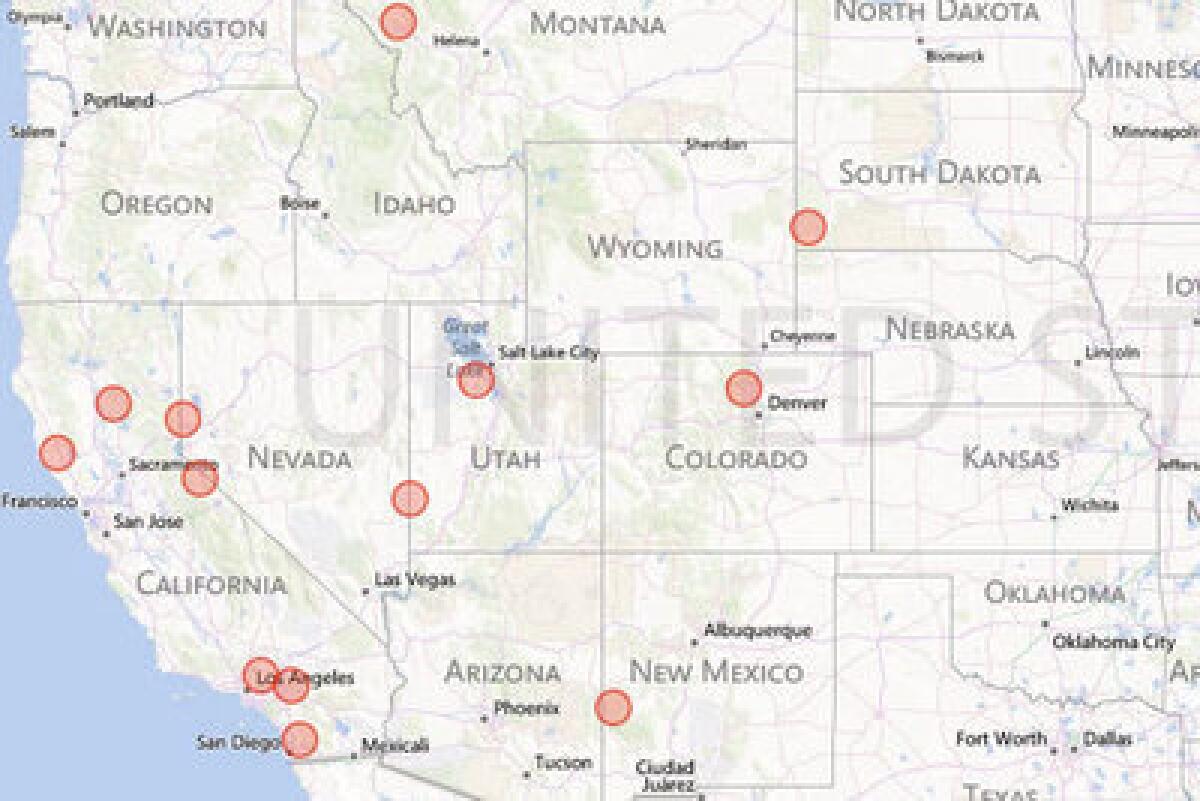
Since 1994, incidents involving aging U.S. Forest Service fire-fighting planes have killed 36 crewmen. This map shows 14 deadly incidents, which resulted in 36 deaths. Click to see full map »
"We're doing the best we can, realizing we can't do it on the cheap," said Tom Harbour, the Forest Service's director of fire and aviation management. "When you look forward, by golly, do we have a problem. We need more aircraft and much more capability."
There are few federal standards regulating the safety of these planes. The Federal Aviation Administration sets standards for aircraft airworthiness and flight crew competency. But once the aircraft begins to fight forest fires, the FAA does not have authority or responsibility to enforce its rules.
Contractors hire outside engineering firms to set safety guidelines for the planes.
"That's problematic," said Michael Barr, a former accident investigation officer who now teaches aviation safety at USC. "It's a little like shooting an arrow from a bow, then drawing the target around the arrow."

Eleven studies since 1995 have concluded that the Forest Service needs to replace its tankers.
In 2009, the service sought $2.5 billion to buy 18 to 28 aircraft. The funding was denied by its parent agency, the Department of Agriculture.
The department's inspector general acknowledged that the Forest Service needed new planes but said the proposal was poorly prepared and did not include enough data. The Government Accountability Office reached similar conclusions last month.
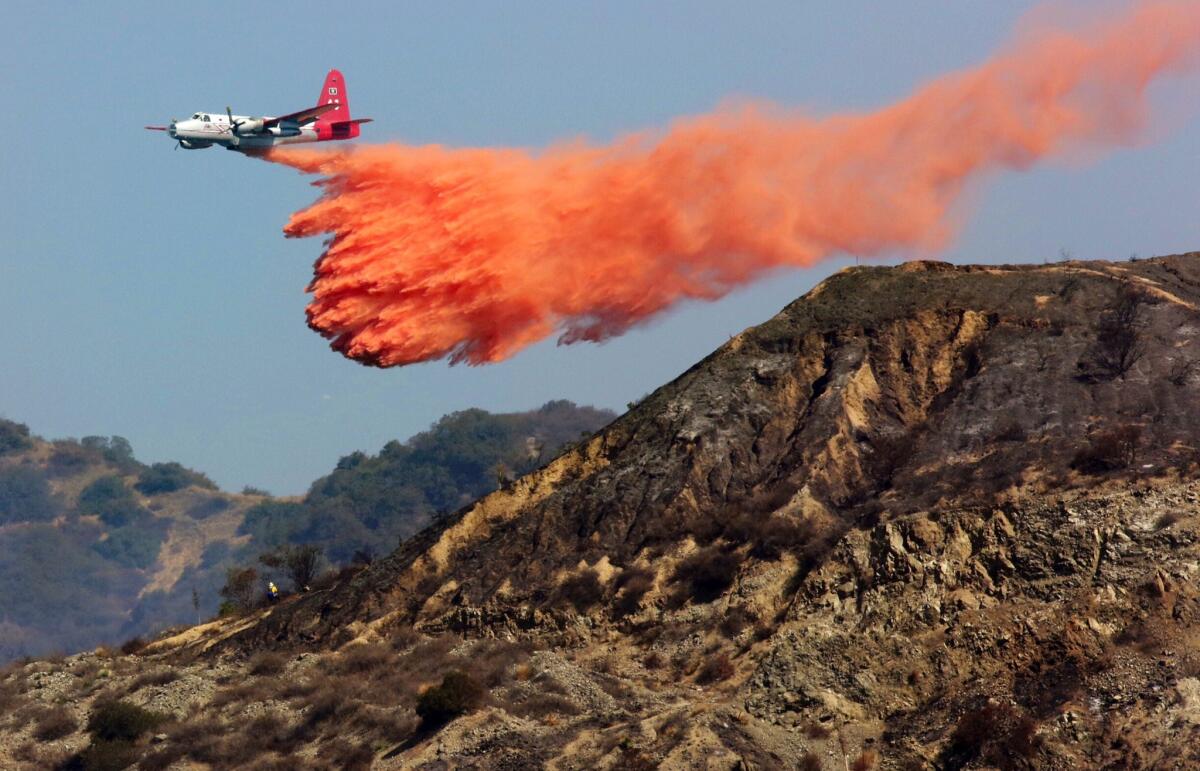
A P-2V drops retardant on the Madre fire in the Angeles National Forest above Azusa. (Irfan Kahn / Los Angeles Times) More photos
Walt Darran, chairman of the advocacy group Associated Aerial Firefighters and a former tanker pilot, said the problems stem from a lack of leadership.
"The Forest Service only changes the way it does business after a high-profile death," he said. "Any improvements that have been made in this industry have been bought with blood."
In 2002, a 46-year-old Lockheed C-130 tanker dropping retardant on a fire near Lake Tahoe broke apart when its wings folded up like a bird's. The crash killed the three crew members. A camera crew captured the accident and the footage was shown on the nightly news across the nation.
Another fire plane, this one 57 years old, broke apart during a Colorado fire one month later, and an investigative panel was convened to examine the industry.
The panel's 60-page report released in 2002 said that the Forest Service's safety standard was unacceptable and that its oversight was lacking. It recommended that the agency foster a closer relationship with the aviation industry to improve the safety of its fleet. By 2004, the Forest Service had removed 33 tankers from its fleet.
The Forest Service says it is trying to modernize. It issued contracts to seven companies this year; most of those planes are not yet ready to enter service. Although the contracts call them "next-generation" planes, they aren't so new.
One of them was pulled from an aviation museum in San Bernardino, where it had been on display for 10 years.
Follow W.J. Hennigan (@wjhenn) on Twitter
Related stories
Pair of 'geeks' sifts through history for aviation ruins
I've seen enough deflated Mickey Mouse balloons to last me a lifetime."
Inside the business of entertainment
The Wide Shot brings you news, analysis and insights on everything from streaming wars to production — and what it all means for the future.
You may occasionally receive promotional content from the Los Angeles Times.

